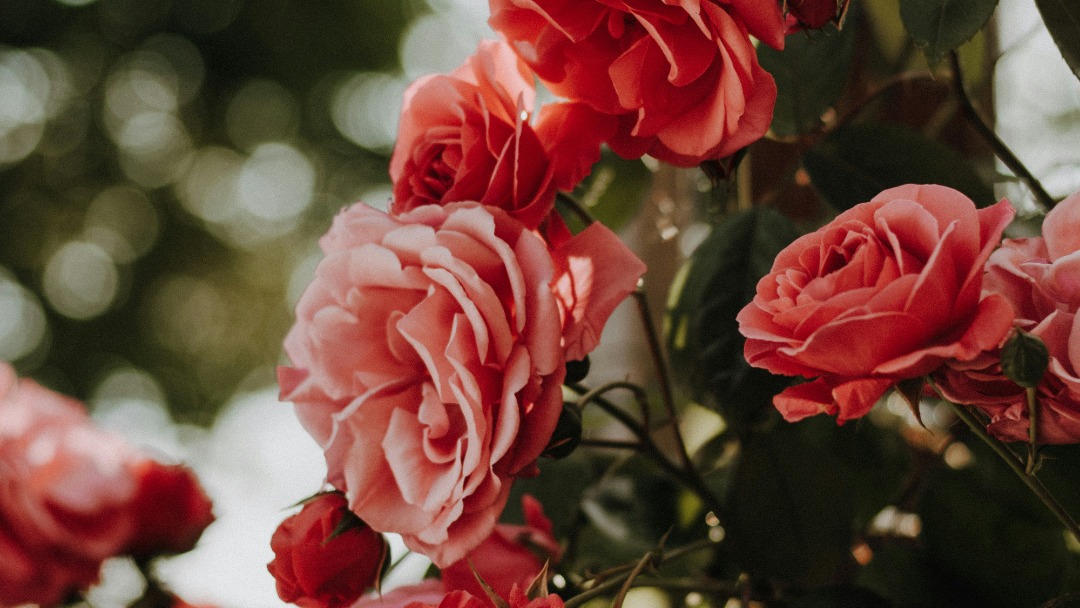With Valentine’s Day approaching, let’s take a moment to appreciate roses. The rose plant has a long history of medicinal uses in ancient and modern practices alike.
Pieces, Places, and Properties
Every part of the rose plant – petals, fruit, stem and roots are used in medicinal remedies. For instance, petals may be eaten or crushed to make rose water, or dried for other uses. Notably, rose oil is very valuable!
.
Golden stems
The essential oil of a particular rose species in Iran is of the most expensive essential oils in the world. The R. damascena rose is so holy in that Iran its known as Gole Mohammadi, or the Flower of Prophet Mohammed.
.
Here, there and everywhere.
Native North Americans use roses a ton. The Shoshone tribe in the Rockies adores the rose flower so much, its used as a symbol to represent their tribe. For cold & flu season, remedies made from rose stems treat children’s coughs. In many Native American traditions, rose petal tea eases tension, treats diarrhea, and acts as a soothing eyewash. Additionally, in these communities, rose-hip extract can hasten birth!
Ancient mediterranean gynecologists recommend bathing in concentrated rose. And, they were known to remedy thrush with dried rose petals. Another medical writer from Byziantine is known to have discussed the use of rose for contraception and abortion.
.
These hips don’t lie…
Rose hips contain high concentration of absorb acid (vitamin C), and can be eaten raw, or used in cooking or to make tea. For instance, in Africa, there is only one species of rose and people love eating its fruit.
The list of helps and heals that roses offer is incredible. Consider how over time and space, the plant has a loving relationship with stomach, liver, reproductive system, blood, nerves and skin. These properties of rose for anti-aging, soothing common conditions like coughs and colds, and strengthening cardiovascular system are well known.
.
But do you feel as good as you look?
The healing properties extend, as you might have guessed, beyond the body. <3 Emotional and psychological benefits of the rose are practiced worldwide. The ability of the plant to tame depression, relieve stress, and inspire bliss is a likely influence on the association of roses and romance.
.
Vata, Pita, or Kapha?
All of the above! In Ayurvedic terms, the rose plant has tridoshic calming effects, bringing whole-bodied soothing to vata, pita, and kapha doshas. The lovely scent, beautiful appearance, soothing touch, and subtle sweetness of the plant provides an enlivening spark to every sense. It balances the subdosha Sadhaka Pitta, which influences the heart, mind, and emotions.
.
Let’s ask big pharma, just to make sure.
In allopathic medicine, the rose plant applies its properties to the pharmaceutical world. Recently, studies demonstrate the power of rose to aid chest pain, period cramps, inflammation, diabetes and even seizures. Get this – studies show rose essential oil delays Alzheimer’s disease symptoms. This is huge, given Alheimer’s is so common and has no known remedy.
—
Rose Petal Tea
Adapted from the New York Times’ recipe
Ingredients (Serves 2)
- 2 tablespoons dried rose petals (find in Middle Eastern markets)
- 1 vanilla bean (split and scraped)
- 21/2 cups boiling water
- 1 table spoon honey to taste.
Directions
- Place petals, vanilla bean, and seeds in large measuring cup or teapot.
- Pour on the boiling water, and stir in honey.
- Cover and let steep for 30 minutes.
- Strain and serve.
Note: If you want to use fresh rose, opt for organic roses, from a local seller at a farmer’s market or a home garden. Roses conventionally farmed get heavily sprayed.
References:
American Historical Association
Conngardener – Native Roses
Inspired Edibles
NYT Cooking
Photo by Lena Albers on Unsplash
2/6/24
